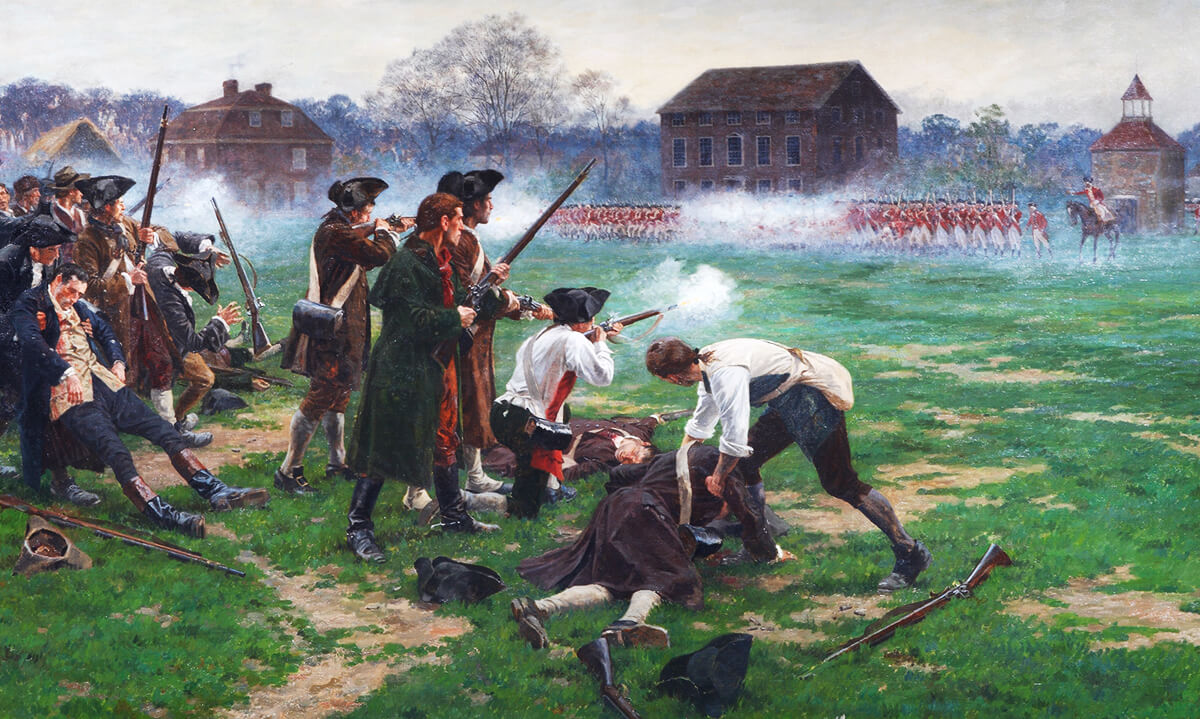Some may be surprised to learn that a 2008 Fox News poll found that abortion was an important issue to 45 percent of voters,1 yet, that number is consistent with what other polls have been documenting since 2002. And statistics further affirm that when voters not only identify abortion as an important issue but when those voters — especially Christian voters — actually vote accordingly, there is a direct impact on election results. (Although many pro-life voters are not Christians, and many Christians who are not pro-life, Christians nevertheless tend to be more pro-life in percentage than any other group, therefore, for the sake of simplifying the correlation and the statistics in the following summary, “Christian voters” will be considered likely pro-life voters.)
Significantly, in the four elections from 1992-2002, Christian voter turnout steadily declined. In 2002, however, that trend reversed and there was actually a 2 percent increase over the 2000 numbers (which is actually fairly sizable since 2002 was a non-presidential year, when voter turnout is traditionally much smaller). Exit polling in 2002 demonstrated that 41 percent of those who voted said that abortion was an important issue affecting their vote.2 The total effect was that 23 percent of all voters said they voted a pro-life ticket, and 16 percent said they voted a pro-abortion ticket,3 thus giving a 7 percent generic advantage to those running as a pro-life candidate. The result was evident: of the 54 freshmen elected to the U. S. House in 2002, 36 were pro-life4 (67 percent), and of the 10 freshmen elected to the U. S. Senate, 8 were pro-life5 (80 percent).
In 2004, Christian voter turnout increased 93 percent over the 2002 numbers6 (part of this surge was due to the fact that it was a presidential year, when turnout typically rises, and part to the fact that the percentage of Christian voters actually increased). In that election, 42 percent of voters identified abortion as an important issue,7 with the total effect being that 25 percent of voters said they voted pro-life, and 13 percent said they voted pro-abortion,8 resulting in a 12 percent generic advantage for pro-life candidates. The 2004 elections sent 40 new freshmen to the U. S. House, of whom 25 were pro-life9 (63 percent), and 9 new freshmen to the U. S. Senate, of whom 7 were pro-life10 (77 percent).
In those two elections in which Christian voter turnout rose, a total of 94 freshmen were sent to the House, of whom 61 were pro-life (65 percent), and 19 freshmen were sent to the Senate, of whom 15 were pro-life (79 percent). The result was the congressional enactment of the first four major stand-alone pro-life laws since Roe v. Wade: the Infants Born Alive Protection Act, the Unborn Victims of Violence Act, the Partial-Birth Abortion Ban, and the Fetal Farming Ban.11 (Prior pro-life congressional activity typically addressed funding measures, such as the Hyde, Kemp-Casten, Dickey, etc. amendments, and the Mexico City policy.12 Furthermore, the addition of so many new pro-life Senators resulted in the confirmation of two new pro-life Supreme Court Justices13 and dozens of pro-life court of appeals and federal district court judges.14
In 2006, however, the trend reversed: Christian voter turnout fell by 30 percent.15 Of the 54 new freshmen sent to the U. S. House in the last election, only 17 were pro-life16 (31 percent), and of the ten freshmen elected to the U. S. Senate,17 only 1 was pro-life (10 percent). The Baltimore Sun identified this as “the most pro-choice Congress in the history of the Republic.”18
Not surprisingly, given the 30 percent drop in Christian voter turnout, the exit polling indicating the percentage of voters who considered abortion as an important issue showed a commensurate drop, plummeting from 42 percent in 2004 to only about 30 percent in 2006. (In the last election, most exit polling did not separate out abortion as a single issue but instead combined it with marriage and other issues to call it “values”; in that exit polling, the “values” numbers ranged from 27 to 36 percent.19 For polls that did break abortion out as a single issue, it was the driving issue for only 6 to 12 percent of voters.20
Significantly, polling reveals that liberals are much more focused on abortion as a single issue than are Christians. A 2005 survey affirmed that among liberals, “no other issue rivals abortion in importance,” but that among Evangelicals, “three-quarters . . . view abortion as very important, [and] nearly as many place great importance on court rulings on the rights of detained terrorist suspects (69%) and whether to permit religious displays on government property (68%).”21 Therefore, while the 45 percent identified by a Fox News poll is a significant number, that high number really has no meaning unless those who hold pro-life values vote in high percentages .
By the way, for those who wonder why the 2008 Congress was so aggressively pro-homosexual, actually pushing through two stand-alone pro-homosexual bills,22> it might be instructive to note that at the same time that Christian voters experienced a 30 percent decline in the last election, 92.5 percent of homosexual men and 91 percent of lesbian women voted in that same election.23 As President James A. Garfield so accurately pointed out a century ago:
Now, more than ever before, the people are responsible for the character of their Congress. If that body be ignorant, reckless, and corrupt, it is because the people tolerate ignorance, recklessness, and corruption. If it be intelligent, brave, and pure, it is because the people demand these high qualities to represent them in the national legislature. . . . [I]f the next centennial does not find us a great nation . . . it will be because those who represent the enterprise, the culture, and the morality of the nation do not aid in controlling the political forces.24
In short, Congress never reflects the values of the nation; rather, it only reflects the values of those who voted in the last election.
Endnotes
1 FoxNews.com, “FOX News Poll: Half of Voters Eye Candidates Abortion Stance”, October 26, 2007.
2 National Right to Life, “The Pro-Life Advantage for Candidates”.
3 National Right to Life, “The Pro-Life Advantage for Candidates”.
4 Numbers provided by the House Pro-Life Caucus.
5 National Right to Life, “Senate Results Cause for Rejoicing,” November 2002.
6 In the 2004 elections, a total of 125,736,000 votes were cast; twenty-three percent of voters were “Evangelicals,” thus translating into 28.9 million votes. See sources at New York Times,“Religious Voting Data Show Some Shift, Observers Say,”; and U. S. Census Bureau, “Voting and Registration in the Election of November 2004”.
7 National Right to Life, “Statement by Carol Tobias: National Right to Life Political Director, November 4, 2004.”
8 National Right to Life, “Statement by Carol Tobias: National Right to Life Political Director, November 4, 2004.”
9 Numbers provided by the House Pro-Life Caucus.
10 National Right to Life, “Statement by Carol Tobias: National Right to Life Political Director, November 4, 2004;” Library of Congress, “CRS Report for
Congress: Freshmen in the House of Representatives and Senate by Political Party: 1913-2005”.
11 National Right to Life, “President Bush Signs Born Alive Infants Protection Act in Pittsburgh Ceremony Attended by NRLC Officials”; National Right to Life, “President Bush Signs Unborn Victims of Violence Act into Law, After Dramatic One-vote Win in Senate,” April 6, 2004; Office of the Press Secretary, “President Signs Partial-Birth Abortion Ban Act of 2003,” November 5, 2003; GovTrack.us, “S. 3504: Fetal Farming Prohibition Act of 2006” (at https://www.govtrack.us/congress/bill.xpd?bill=s109-3504).
12 American Family Association, “Loretta Sanchez of California Amendment; National Defense Authorization Act for Fiscal Year 2004”; University of Maryland, “CRS
Report for Congress: Abortion Services and Military Medical Facilities”, pp. 17-18; National Women’s Health Network, “The Women’s Health Activist: The Hyde Amendment’s Prohibition of Federal Funding for Abortion — 30 Years is Enough”; National Committee for a Human Life Amendment, “The Hyde Amendment: Fact Sheet”; Ontario Consultants on Religious Tolerance, “US ‘Mexico City’ Policy: Abortion funding in foreign countries,” last updated April 27, 2007 .
13 United States Senate, “U.S. Senate Roll Call Votes 109th Congress-2nd Session” (at https://www.senate.gov/legislative/LIS/roll_call_lists/roll_call_vote_cfm.cfm?congress=109&session=2&vote=00002); United States Senate, “U.S. Senate Roll Call Votes 109th Congress-1st Session” (at https://www.senate.gov/
legislative/LIS/roll_call_lists/roll_call_vote_cfm.cfm?congress=109&session=1&vote=00245).
14 See for example: Christian Life Resources, “President Bush Will Nominate 20 Pro-Life Judges, Democrat Fight Looms”; Lifenews.com, “President Bush Renominates Pro-Life Judges, Senate Abortion Battle Begins”, etc.
15 In the 2006 elections, a total of 85,251,089 votes were cast; twenty-four percent of voters were “Evangelicals,” thus translating into 20.5 million votes. See sources at George Mason University, “United States Elections Project: 2006 Voting-Age and Voting- Eligible Population Estimates”; New York Times, “Religious Voting Data Show Some Shift, Observers Say”.
16 Numbers provided by the House Pro-Life Caucus.
17 See for example: Wikipedia.com, “List of Freshmen Class Members of the 110th United States Congress” (at https://en.wikipedia.org/wiki/List_
of_freshman_class_members_of_the_110th_United_States_Congress).
18 Thomas F. Shaller, Baltimore Sun, February 28, 2007.
19 See for example: The Pew Forum, “Religion and the 2006 Elections: Exit Poll Results — The ‘God Gap’ Widens”; FoxNews.com, “National Exit Poll: Midterms Come Down to Iraq, Bush”, November 8, 2006.
20 See for example: Faith in Public Life, “Exit Poll Shows Shift in Religious Vote Driven By ‘Kitchen Table’ Moral Issues”, November 15, 2006; People for the American Way, “The American Values Survey”, August 2006.
21 The Pew Research Center, “Abortion and Rights of Terror Suspects Top Court Issues” (at https://people-press.org/reports/display.php3?ReportID=253), August 3, 2005.
22 GovTrack.us, “Local Law Enforcement Hate Crimes Prevention Act of 2007” (at https://www.govtrack.us/congress/bill.xpd?bill=h110-1592); Library of Congress, “S. 1284: Summary”.
23 Numbers from a study by San Francisco-based Community Marketing Inc. reported in the Los Angeles Times online blog on August 8, 2007 (at https://latimesblogs.latimes.com/washington/2007/08/
gay-power.html).
24 John M. Taylor, Garfield of Ohio: The Available Man (New York: W. W. Norton and Company, Inc., 1970), 180, quoted from “A Century of Congress,” by James A. Garfield, July 1877.
Still looking for answers? Visit our FAQ page
More Resources
Know the Truth and Protect Your Freedoms.
Still looking for answers? Visit our FAQ page
Stay Informed with the Latest Resources
Enter your email address to receive our regular newsletter, with important information and updates right in your inbox!










